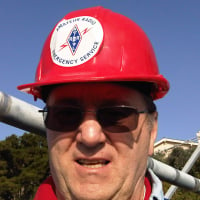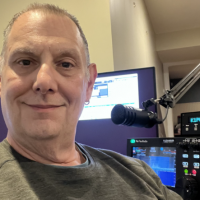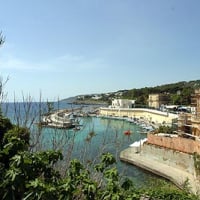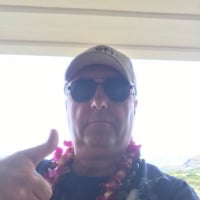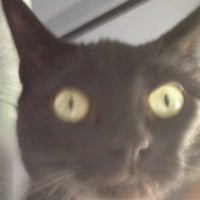Welcome to the FlexRadio Community! Please review the new Community Rules and other important new Community information on the Message Board.
Need the latest SmartSDR or 4O3A Genius Product Software?
SmartSDR v4.1.3 | SmartSDR v4.1.3 Release Notes
SmartSDR v3.10.15 | SmartSDR v3.10.15 Release Notes
The latest 4O3A Genius Product Software and Firmware
SmartSDR v4.1.3 | SmartSDR v4.1.3 Release Notes
SmartSDR v3.10.15 | SmartSDR v3.10.15 Release Notes
The latest 4O3A Genius Product Software and Firmware
If you are having a problem, please refer to the product documentation or check the Help Center for known solutions.
Need technical support from FlexRadio? It's as simple as Creating a HelpDesk ticket.
Need technical support from FlexRadio? It's as simple as Creating a HelpDesk ticket.
Suggestion for Contest Focused SmartSDR v1.6
Comments
-
@Peter. I used to write software for a living 50 years ago so,I understand where you are coming from. An overlay program could be made to work but it would be better ians I suspect easier to correlate if SSDR had API hoocks to allow direct input to the display.0
-
@Walt Would that life were so simple. Until,the Maestro actually delivers, the K3 has rhe superior contest ergonomics.1
-
@Howard There was software 50 years ago?? I'm kidding, I'm kidding!!! Really! :-) Peter K1PGV2
-
I started programming patch panels. Then we got paper tape. Then punch cards. Mostly machine language then assembler and finally fortran.
By the time we got to more sophisticated stuff I was already running the company so I hired programmers.
lIke CW guys I still prefer Machine Language.1 -
Respectfully disagree. I don't mean if its not 100% it has to be 0%. I think you're reading too much into it. I would think, for one, constantly taking your antenna off axis, whether manually or via a button push is antithetical to 'rate'. Was HRD originally written by a contester? I've never read anything to indicate that. Ditto CQR. I'll concede N1MM perhaps was. As you, yourself, have said, anything that is a distraction kills 'rate'. I am not arguing against contesting features. I am arguing SSDR is too 'busy' already. Don't turn it into the FRS version of uSoft Word. That would likely have a detrimental effect. This, btw, is a unique issue with the flex as a program, be it Microsoft Windows or Linux or iPad, is REQUIRED. One doesn't need a computer to run a K3. With Maestro, now you'll need two computers. So what FRS puts into that SSDR is critically important to everyone not interested in using it.
I think the idea behind N1MM logger is your focus is 100% on your logging program which, oh by the way, controls your headless radio. Is FRS turning SSDR into a logging program as well? I would hope not.
BTW, thank you and thank your son for me.
0 -
I'll take that bet.1
-
Since SSDR is a WPF based GUI, a transparent overlay with the spots on it , in sync with the panadapter, wouldn't be too hard for someone with WPF experience.( not me....yet) :-) Gathering the spot info and keeping it updated would be tougher. It would be nice if Flexlib supported mirroring a panafall from a second gui app while SSDR is running. That would make for some interesting add-on's for SSDR. Imagine a panafall running on a second display with spots that not only gave the DX station's callsign, but changed color according to signal strength at your QTH. And hovering the mouse over the DX's call, showed freq and split(if any). Clicking on the spot would tune the main panafall to that freq and set the split for you. That's what has been running thru my head about this subject. Back to trucking! James WD5GWY0
-
Hope you enjoy the wine0
-
The competitive nature of contesting drives contesters to invest heavily in high end radios with marginal advantages over mid-range radios. These marginal advantages are not cost-effective to the average amateur radio operator, but to the contester they ARE cost-effective because of the competitive edge they provide. This willingness of contesters to continually upgrade their equipment for marginal competitive advantages is not lost on the manufacturers of amateur radio equipment. They incrementally engineer better and better high end radios, and the engineering advances made in the high end radio market ultimately trickle down to the low and mid-range radios, which enhances the hobby for the other 99% of the non-contesting amateur amateurs. There is no specific contest that can be identified as advancing amateur radio technology, it is the sum total of the demand for competitive advantage that drives technological innovation. So let us not bemoan the attention given to enhancing SSDR for contest operators. Everyone will benefit from these enhancements. If non-contesters object to being the beneficiary of these enhancements, then ask contesters to pay extra for enhanced versions of SSDR with features and specs not available to the standard versions of SSDR. Who do you think would be screaming the loudest that this would be unfair? NOT the contesters.....this is the first radio investment we've ever had that did not require buying a new radio to get new features. This 6000 series radio has dramatically reduced our costs for acquiring additional performance. No, it would be the non-contesting community that would complain that they would have to pay for the enhancements they would have otherwise gotten for free. So let me make this modest proposal. How about a simple "Thank you" to all the contesters over the years that have driven (funded) innovation in the amateur radio market?1
-
Ok Walt,
your idea is clear.
It is not correct to put "10 pounds of whatever, stuffed into a 5-pound bag" but I would like to imagine, and design, the bag in a different way.
I do not like to debate about SSDR development strategies, I just like to point out that today technologies offers tools that allow pluggable and customizable interfaces.
I'm thinking about systems that implement the pattern "decorator" (just to clarify my idea) granting components atomicity, reliability customizable interfaces for each kind of user. The problem of customizable interfaces has already been solved, you can not argue about that.
I just imagine a version of SSDR which allows each users to use the same components but in a different way. As it is today, a CW contester has to use: SSDR, SSDR-DAX, SSDR-CAT, SDR-BRIDGE, CW-Skimmer, a log program and probably a control rotator program. Things are even worse if he is contesting for digital modes.
Probably another strategy could be extending the Flex Libraries into graphical components to be dropped on Windows forms. This would make it easier and faster developing from scratch applications that implement feature not provided with SSDR.
73'
0 -
Contesting request.
With traditional so2r (two separate radios) I can set unique cw sidetones for each radio (i.e. 500 hz for the left radio and 700 hz for the right ). I found this to be a useful and possibly essential technique especially wrt instantly recognizing which radio information is coming from w/o the need for visual confirmation.
If I open two pan adapters for two separate bands in my 6300, I have found that the same cw sidetone selected in SSDR is applied to each pan adapter with no ability to retain a separate unique sidetone for the other band.
In short , I would like my SS flex to have the ability to select and retain a unique cw sidetone for two separate bands being displayed.0 -
Contesting request.
Another nice so2r feature w/o having to go into SSDR menus would be an automatic selection of audio dependent upon operator focus. There are times while employing so2r, it makes more sense to direct all focus on the run frequency ( i.e. high rate of qsos per hour ) vice listening to the separate search and pounce band for multipliers. During these times, it would be nice to have audio from the run freq in both the left and right channel w/o having to change settings in SSDR. Vice versa, if the run freq slows down ( subjective and dependent upon each operator) and I now decide to start searching for multipliers on a different band while continuing to call cq on the run band, I now need audio from one band in one channel and audio from the other band in the other channel. Again this would be nice if I did not have to go into SSDR menu to accomplish this. Perhaps it could be incorporated in both maestro and flex control. If I remember correctly, I can change vfo focus for two separate bands via my flex control. Now if separate audio settings could be retained dependent upon which band has vfo focus then that would be great because it would mirror operator focus.1 -
Hi All, I see one more feature / solution on stage most wanted - easy realization of the QSO recording (TX and RX parts of course) I suggest into separate DAX channel as well.0
-
It's been talked about before, but as a phone contester, an integrated Voice Keyer that could be activated from Contest Software would be nice.
73,
Gary - W4EEY (new 4-land call)
3 -
Contesting request for SO2R: a wideband signal strength meter that measures the aggregate signal input into each SCU so that we can be sure that when we transmit FDX, the other SCU is receiving within the +9dBm safe limit. This will be helpful for the 6700 running FDX and probably also for the 6500/6300 with the future SO2R box.
0 -
Here's how Spots look currently on the Flex 6000 Series with the Mac OS client "DogParkSDR" with MacLoggerDX. Works very nicely and with great integration.
 1
1 -
NaP3 horizontal spots look fine on a crowded band: http://www.tentecwiki.org/lib/exe/fetch.php?cache=&media=orionpan3.jpg

2 -
The only way that integrated spots display is going to be REALLY useful in a contest is if it's tightly integrated with the contest logging program (i.e. N1MM Logger+). That's the only way you can tag spots as worked or unworked etc. Without that tagging, the spot display loses much of its value.2
-
Maybe N1MM will license his source to Flex so that the logger is integrated into v1.6. Surely, this is a trivial matter.
0 -
That would be cool but N1MM Logger+ is updated constantly. They need to add an API or some kind of dynamic interface that will expose N1MM bandmap info for other programs (SSDR) to use. That's the way to go IMHO.0
-
If I am not mistaken, 1.6 will arrive before Maestro, se I would put good money it is already out of the oven. Also, I believe n1mm is VB. The radio is Linux, Linux doesn't do VB. I've already asked about licensing the source. Nope.1
-
I have not done that much contesting but the little I have done has shown me that #1 is the op. You have a great skilled op with talent and give that op a crummy radio he/she will still probably beat you.
#2 assistants. These could be spots, others calling out freqs and calls (like we used to do in the old days), etc. N1MM attempts to do much of this for you.
#3 Seemless automation - This also is in N1MM. Once you get it setup you can run an entire contest with very minimal interaction.
Normally I am all for technology and I think the idea of spots labeled by calls probably set in colors so you know instantly if you've worked them or not is very cool indeed, doesn't it take a little out of the spirit of the contest?
I mean with this feature the op is almost becoming useless. I mean why not write an app that connects to a spot looks for all reported calls you have not worked, tunes to the freq, begins to analyze the incoming signals, looks for a break, transmits your call, upon hearing your call back transmits the exchange and moves on to the next one.
I mean you as the op sit back and watch the points rack up! The only time you'd be needed is if the automated routine was stuck and could not decode well enough to work. Then you just lean forward, put your coffee down and press a few buttons and then it continues on automatically.
While this is a very cool idea it seems that it sort of removes the op from the contest and would not labeled spots in the display almost do the same?
Don't get me wrong... If I could do I I would and I'd enjoy it but wonder if the progress we are making is taking the op out of the loop. I mean with a reasonable antenna, amp, and software like I described above I think even I could place very high in a contest since my software would nail every contact I had not made in S&P mode.
Without any doubt still a very skilled op would top me because they can use the one thing software can never provide, the power of the human brain to make intuitive decisions like changing bands or antennas or whatever.
Anyway it would still be fun to see something like this!
0 -
Sorry Mark, but that's not how I would use the overlaid bandmap during a contest. I'm not talking about using the spotting network to find stations for me to work. I'm talking about UNassisted operation, using the panadapter signal traces to find stations for me to work. But in unassisted contesting, a bandmap is crucial for marking stations you have/haven't worked yet. YOU do the marking/spotting. So if I work DL1ABC on 14.035, then "DL1ABC" will overlay the panadapter at 14.035 and its font color will denote that I've worked it and I will know that I can skip over it as I tune the band repeatedly looking for new signals. If I find YB1AB at 14.040 with a huge pileup, I can add "YB1AB" to the overlaid bandmap and its font color will show I still need to work him. etc etc
73, Barry N1EU0 -
Agree - spot integration from n1mm is a number 1 priority for me - the lack of it is the only thing that has been tempting me to buy a k3s and run it with lp pan and nap3. Whether I am assisted or unassisted, the ability to see spots or self spots on the bandscope and to see from their colour whether I have worked them or not would be a major step forward and icing on the cake.0
-
NaP3 is not going to show a spot any differently if you work it or not. The NaP3 spot overlay is a pretty toy but virtually useless in a contest IMHO. The spot integration needs to be tightly coupled with N1MM. Flex would need to put a programmer on the project who would work with the N1MM guys and get it done. The payoff for Flex would be a big bump in sales, every contester would want this feature. Well almost every ;-)1
-
Makes sense Barry. As I said I'm not contest experienced and my imagination can run wild at times.0
Leave a Comment
Categories
- All Categories
- 377 Community Topics
- 2.1K New Ideas
- 630 The Flea Market
- 8.2K Software
- 107 SmartSDR+
- 6.4K SmartSDR for Windows
- 183 SmartSDR for Maestro and M models
- 427 SmartSDR for Mac
- 271 SmartSDR for iOS
- 255 SmartSDR CAT
- 190 DAX
- 382 SmartSDR API
- 9.3K Radios and Accessories
- 36 Aurora
- 250 FLEX-8000 Signature Series
- 7.2K FLEX-6000 Signature Series
- 942 Maestro
- 55 FlexControl
- 865 FLEX Series (Legacy) Radios
- 919 Genius Products
- 461 Power Genius XL Amplifier
- 335 Tuner Genius XL
- 123 Antenna Genius
- 296 Shack Infrastructure
- 208 Networking
- 454 Remote Operation (SmartLink)
- 144 Contesting
- 784 Peripherals & Station Integration
- 139 Amateur Radio Interests
- 1K Third-Party Software
